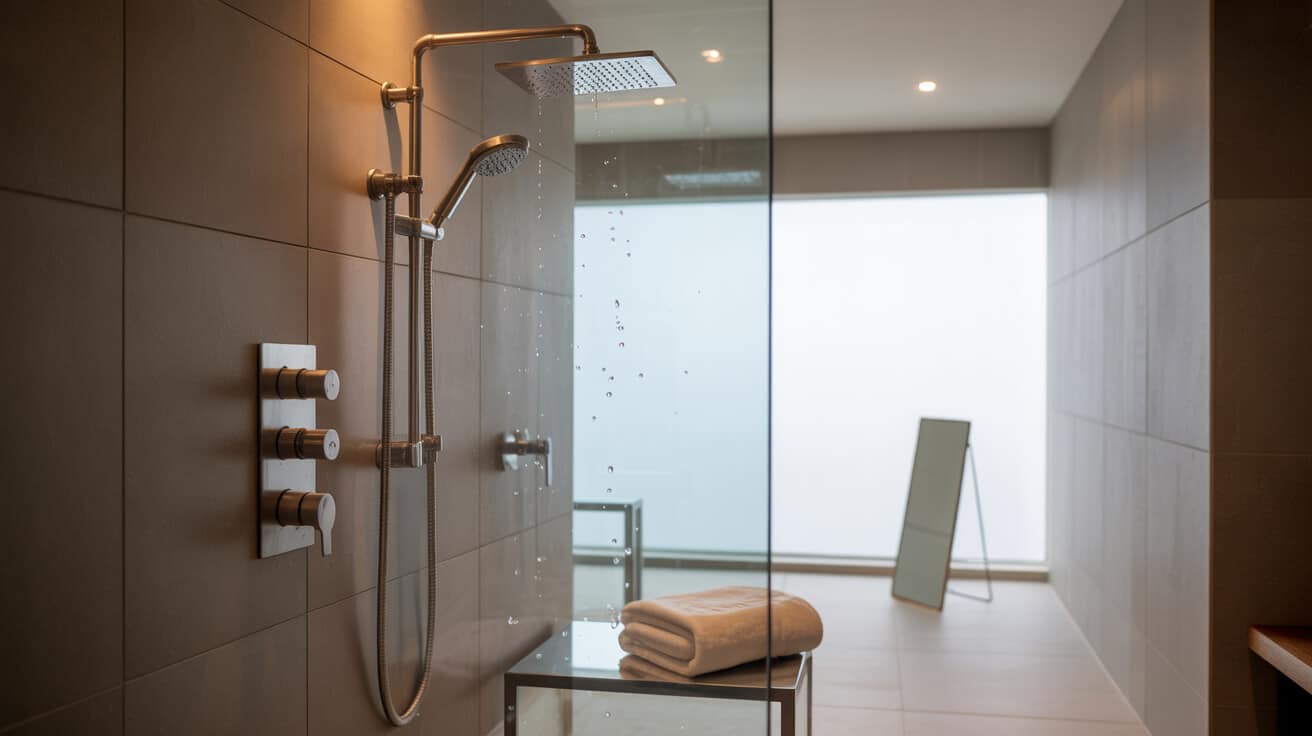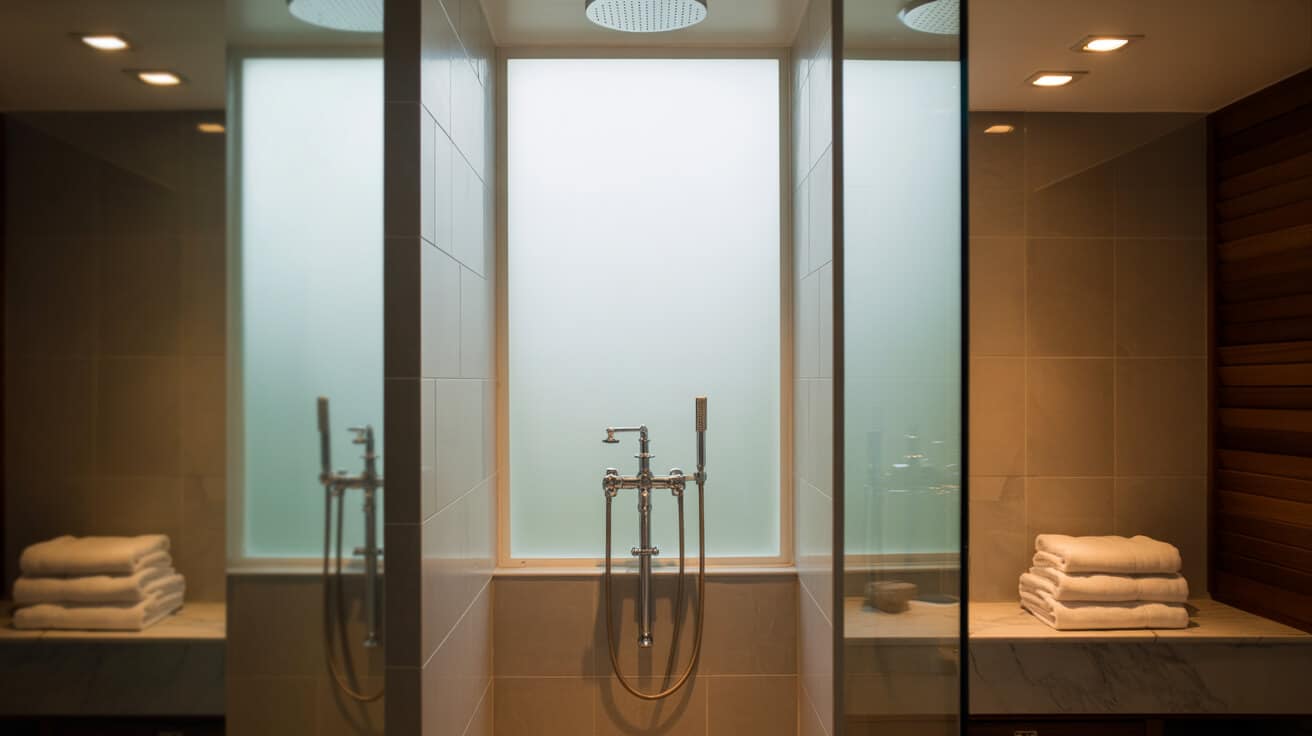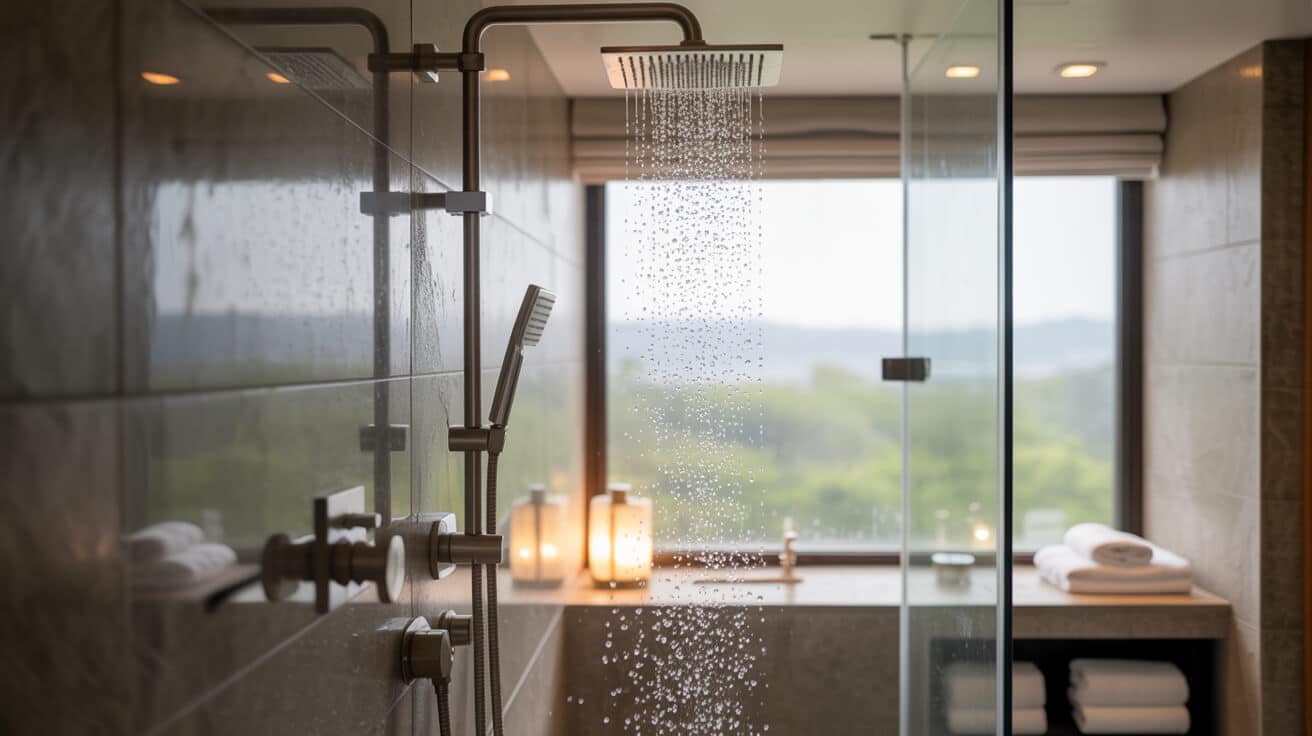Mixer showers are recognised as a pivotal component in contemporary bathroom design, providing a direct interface between your property’s water delivery system and the user’s desired bathing experience. Their installation is a confluence of technical understanding, regulatory compliance, and user-focused intent. As a blend point for hot and cold feeds, your mixer shower dictates flow stability, temperature safety, and system integrity, regardless of whether you operate a single household, a rental portfolio, or a large-scale facilities programme. Plumbing and heating companies such as Plumbers 4U are instrumental in delivering installations that harmonise these engineering, safety, and value mandates.
Etymology or name origin
The phrase “mixer shower” has evolved from the functional description of fixtures that blend two water supplies at the point of use. Early terminology referred simply to mixer taps or combination valves; over time, delineations emerged including “thermostatic mixer,” “manual mixer,” and “bar mixer,” referencing either the valve regulating method or the physical form. In British technical documents, distinctions such as “TMV” (thermostatic mixing valve), “exposed bar mixer,” and “concealed valve” categorise device specifications. Internationally, terms reflect both regionally distinct codes and market-driven naming conventions, complicating direct equivalence but reinforcing the system’s universal objective: balanced, user-controlled showers.
Overview / context
Mixer showers exemplify the interface between building water infrastructure and user safety or comfort requirements. Present in both retrofit and new-build scenarios, they are selected for their compatibility with a spectrum of heat and pressure systems, including combi boilers, unvented cylinders, and gravity-fed arrays. Professional plumbing companies evaluate each unique supply configuration, ensuring legal and technical prerequisites are met before recommending or installing a specific mixer arrangement. Regulatory shifts, especially in public and rental accommodations, have prioritised performance metrics such as anti-scald protection, compliance audits, and service traceability. Your property’s investment in high-quality mixer showers leverages these systems for durability, health, and minimised maintenance cycles.
Industry role and system context
Professional firms like Plumbers 4U conduct comprehensive site assessments, identifying compatibility challenges and mapping solutions tailored to your existing infrastructure. Decision pathways often integrate supply balancing, pressure regulation, and anticipated usage frequency, which impacts device selection and installation strategy.
Residential vs. commercial settings
In homes, the priority may be seamless integration and user-friendly operation, while rental properties and multi-tenant blocks demand proof of compliance, access for rapid maintenance, and standardised documentation processes. Commercial installations—hotels, fitness centres, care facilities—place additional emphasis on regulatory certification, anti-scald controls, and asset tagging.
Interface with property lifecycle
Triggers for new installations include bathroom renovations, mandatory upgrades on change of tenancy, construction of accessible accommodations, or evolving government requirements for hot water safety.
History
Origins
The earliest mixer fixtures emerged as solutions to provide users with controllable water temperature at a single outlet, replacing the less safe or convenient practice of operating two taps. Early models relied on basic mechanical balancing, often subject to rapid shifts with supply changes.
Industrial emergence
With mass adoption of pressurised water supply networks in the twentieth century, engineering firms developed thermostatic mixing valves. These allowed maintenance of a steady outlet temperature by actively responding to variations in supply pressure or temperature. Public institutions became early adopters, motivated by health and safety legislation aimed at preventing scald-related injuries.
Contemporary evolution
Contemporary mixer systems reflect integration of safety standards into law, especially in the UK following Building Regulations Part G and Water Regulations Advisory Scheme (WRAS) protocols. Widespread deployment of thermostatic controls, digital adjustment, and programmable preferences corresponds with both heightened user demand and stricter compliance checks carried out during property handovers or site surveys. Providers like Plumbers 4U have responded by adopting validated commissioning and documentation workflows as part of every installation.

Concept / description
Principle of operation
A mixer shower operates by channelling distinct hot and cold water supplies into a valve body, where the two flows are mixed to a selected temperature. Manual configurations use mechanical adjustment, while thermostatic versions include a sensor that reacts to supply fluctuations for more stable output. The valve directs the mixed water to an outlet—typically a shower head, handset, or both—sometimes via a diverter that allows user control over single or multiple outlets.
Key components
- Valve body: – houses the mixing mechanism, available in manual or thermostatic design.
- Controls: – handles, dials, or electronic panels that adjust temperature and flow.
- Inlets and outlets: – connect to property supply pipes and deliver mixed water to the selected outlet.
- Diverter: – optional, enables switching between shower head, bath filler, or other outlets.
- Seals and fixings: – ensure watertight integrity and hold the assembly in place.
- Isolation valves: – allow for straightforward service or emergency shut-off.
Installation prerequisites
System compatibility checks are non-negotiable. Hot and cold feeds must be balanced for both pressure and temperature; most manufacturers specify minimum pressure and flow rates, expressed in bar or litres per minute. Pipework is typically 15mm or 22mm, with copper or polythene (PEX) permitted under current British Standards. Wall surfaces must be assessed for suitable mounting—tiled, plasterboard, or solid masonry each carry distinct installation methodologies and fixings.
Regulatory requirements
Installations in care, rental, or high-usage public environments demand WRAS-approved devices, TMV2/3 certification, and a commissioning protocol that documents operational parameters and user demonstration.
Functionality / purpose / applications
Domestic use
Mixer showers serve as the primary distribution system for hygienic and comfortable bathing in homes. Users benefit from the ability to precisely control temperature and flow, accommodating personal comfort and changing seasons. Accessible configurations, such as large lever handles or tactile panels, improve usability for elderly, disabled, or younger residents.
Commercial and institutional deployment
Hotels, tenant blocks, healthcare settings, and sporting facilities adopt mixer showers as a standard for balancing asset value, public safety, and service efficiency. Management routines encompass scheduled maintenance checks, formal documentation, and traceable installation records to satisfy audits and insurance policies.
Safety and anti-scald
Thermostatic mixers prevent scalding by blending flows through a temperature-sensitive mechanism. In sudden drops of cold supply, the valve rapidly shuts, minimising risk. Regulatory mandates, particularly for care facilities and rentals, require certification of anti-scald apparatus and inclusion in property compliance files maintained by your company or managing agent.
Classifications / types / variants
Manual mixers
Manual mixers are operated by user-adjusted control levers or dials which directly alter the hot and cold ratio. While cost-effective and suitable for balanced supply properties, they may not comply with high-safety environments requiring anti-scald regulation.
Thermostatic mixers
Thermostatic mixers employ a control cartridge responsive to temperature variation, providing consistent output and automatic shut-off in unsafe conditions. These are required in institutional environments and particularly useful in homes with vulnerable occupants. Look for devices certified under TMV2 (domestic) and TMV3 (healthcare/commercial) standards.
Digital and programmable devices
Digital mixers enable temperature and flow adjustment via remote or wall-mounted control panels, with options for programmable presets. High-end systems integrate with property management solutions, facilitating maintenance alerts and usage analytics.
Configuration: exposed, concealed, bar mixers
Mixer valves may be exposed (surface-mounted for easy maintenance), concealed (in-wall for aesthetic and space considerations), or formatted as bar mixers—horizontal, standardised centres favouring British pipe layouts. Concealed systems prioritise seamless bathroom aesthetics, but require planned access hatches for later service.
Systems / tools / methodologies
Planning and survey
A robust planning phase protects your investment by verifying:
- Supply pressures/flow rates
- System type (combi, unvented, gravity-fed)
- Wall and surface construction
- Access to hot/cold feeds
- Allocated installation space and location within the bathroom
Pre-instal surveys by seasoned companies such as Plumbers 4U identify risks (legacy pipework, pressure disparity) and advise on suitable device types.
Tools and consumables
Installers utilise a full toolkit:
- Adjustable spanners, pipe wrenches, and cutters for copper or PEX
- Tile/masonry bits for wall preparation, spirit levels for alignment
- Compression and push-fit fittings, PTFE tape, sanitary silicone sealant
- Pressure gauges, thermometers, and test plugs
Installation process
- Shut off water supplies and drain down affected areas.
- Mark fixing points and prepare wall with necessary pipe chases or access holes.
- Instal isolation valves and assemble mounting brackets, ensuring level placement.
- Lay and connect pipework to device, checking for pressure and flow compliance.
- Fit mixer valve and connect outlets—shower heads, handsets, and diverter assemblies.
- Seal all joints and visible penetrations for lasting waterproofness.
- Commission system—restore supply, run to purge air, and complete leak and temperature checks.
- Demonstrate operation to the owner or manager; document specifications as per commissioning checklists.
Commissioning and documentation
Documentation includes:
- Recorded pressure and temperature readings
- Confirmation of correct thermostat operation
- A completed commissioning log, asset tag, or warranty registration for your maintenance cycle

Stakeholders / entities involved
Professional installer / company
Installation by Plumbers 4U or other accredited plumbing and heating firms ensures system suitability, regulatory compliance, and proper documentation. Installers are typically registered with WRAS, WaterSafe, and for certain works, G3 (unvented hot water).
Property owner
As a property stakeholder, you prioritise reliable service, warranty documentation, and protective features for household members. Rental asset managers focus on maintenance traceability, legal compliance, and cost control.
Manufacturer / supplier
Manufacturers and their supply partners ensure devices are tested to regulatory standards. Supporting documentation, product support, and parts replacement pathways are managed centrally, benefiting your company’s asset planning.
Regulatory and oversight bodies
Compliance bodies set operational and documentation standards. Their audits focus on installation records, device certification, and ongoing service history, reinforcing your organisation’s adherence to regulation.
End user / occupant
Your use of a mixer shower is defined by convenience, confidence in temperature stability, and safety features that shield household and facility occupants from water-related injuries.
Legal / regulatory / ethical considerations
National regulations
In the United Kingdom, installations are governed by the Water Supply (Water Fittings) Regulations 1999, which prioritise non-return, backflow prevention, use of approved materials and certified valves. Building Regulations Part G mandates anti-scald safety, particularly in rented or communal environments.
Certification and installer requirements
Your selected company should field engineers registered with WRAS, WaterSafe, or holding G3 and TMV2/TMV3 qualifications. For compliance-critical scenarios, documentation must evidence commissioning, safety settings, and device batch data.
Documentation and handover
Asset logs, commissioning sheets, and user handbooks are essential for legal compliance and for managing repairs, warranty claims, or incident investigations. Landlords and managers should ensure all paperwork is filed and accessible for regulators or insurers.
Ethical practice and safety
Ethical service standards require adherence to anti-scald guidelines, design for accessibility, and truthful disclosure of limitations—protecting both end users and asset holders.
Performance metrics / data / measurements
Flow rates and temperature stability
Adherence to manufacturer-stated output—measured in litres per minute or gallons per minute—ensures satisfactory experience. Recommended standards frequently dictate:
- 8–12 L/min at 1 bar minimum for showers
- Thermostatic output between 38°C–46°C, with ≤2°C variation under varied load
Commissioning and inspection
Validation comprises:
- Static and dynamic pressure measurements
- Thermometric readings across expected range and demand variability
- Visual joint and seal inspection both immediately and after a set period of use
Warranty and reporting
Confirm the validity of manufacturer and installer guarantees, and maintain a system for rapid fault reporting, enabling your property, asset, or building management process to mitigate risk.
Challenges / barriers / limitations
Operational or technical issues
Issues commonly encountered in practice:
- Uneven or inadequately balanced systems lead to temperature shock or inconsistent output
- Sub-optimal legacy pipework may require upgrade or rerouting
- Concealed installations pose future maintenance challenges
- Scaling and limescale buildup shorten device lifespan and degrade performance
Social or economic factors
Cost considerations extend beyond device purchase to includes wall repair, tiling, or decorative finishing. Scheduling disruptions can impact both home and business users, emphasising the value of expert project management.
Philosophical or practical objections
Sustainability discussions consider resource use, recyclability, and the balance between advanced feature sets and lifetime value for your property.
Impact / influence / legacy
Property and tenant value
Upgraded mixer showers enhance your asset’s appeal to current and future occupants. Documentation of compliant instals is valued in conveyancing, tenancy agreements, and safety audits.
Brand and industry influence
Consistent high-quality work by Plumbers 4U and similar firms supports sector reputation—demonstrating measurable reductions in call-backs, faults, audit failures, or claims.
Public health and safety records
Mixer shower deployments are associated with prevention of scald injuries, improved hygiene, and enhanced service in both public and private environments.
Future directions, cultural relevance, and design discourse
Technological evolution
Digital and app-integrated controls, self-diagnosis modules, and data-driven usage feedback are redefining expectations. Personalised profiles, water-efficient modes, and fail-safes are likely to become standard as your company’s infrastructure evolves.
Cultural and regulatory developments
Policy shifts toward sustainability, accountability, and inclusive design continue to elevate the strategic importance of documentation and user adaptation. Promotion of water efficiency and reductions in carbon footprints is shaping device research and adoption trends.
Accessibility and inclusion trends
Mixer systems are increasingly optimised for tactile operation, visual contrast, and voice or remote accessibility, reflecting the ageing of populations and the prioritisation of universal design in new developments.
Design and sustainability discourse
Emerging best practices integrate eco-materials, circular supply chains, and flexibility for future upgrades. As water and energy scarcity become more acute as concerns, mixer shower selection and installation by trusted service providers remains a cornerstone of responsible property management.

